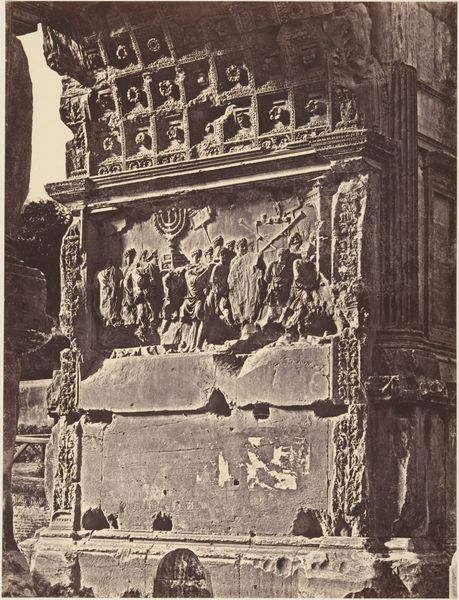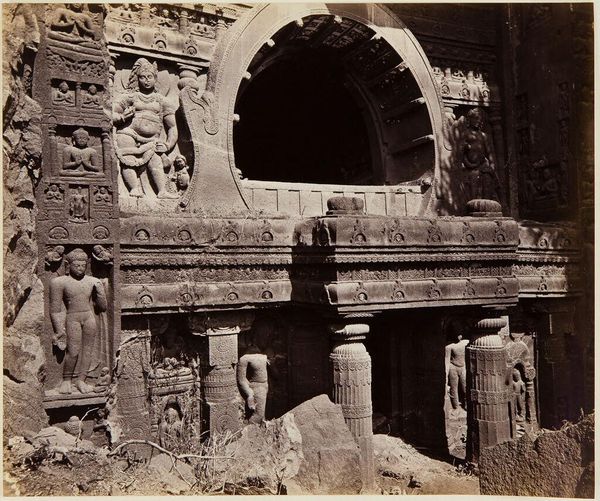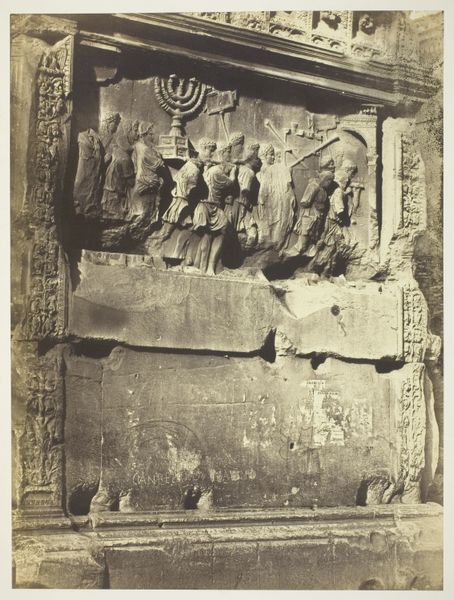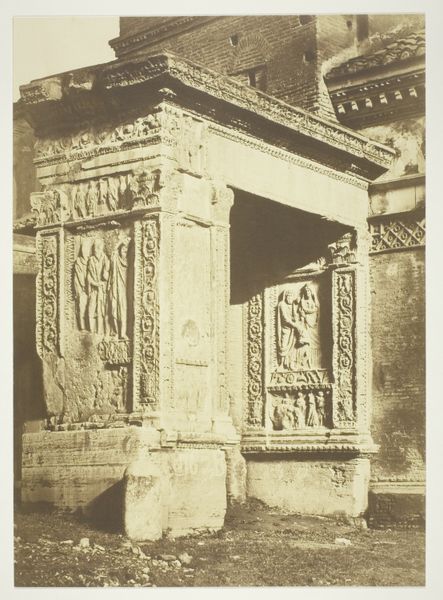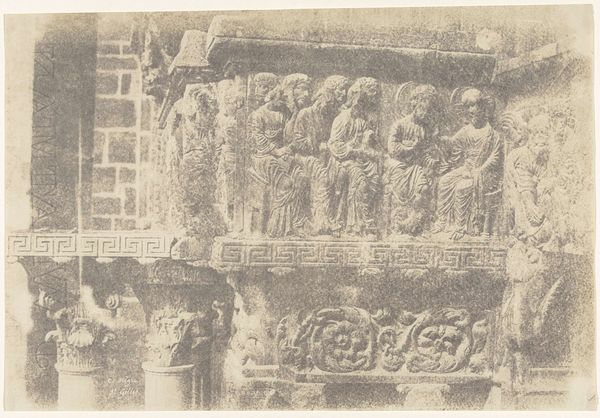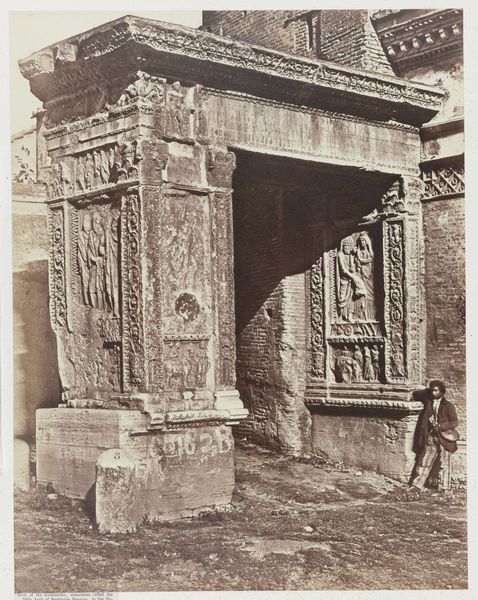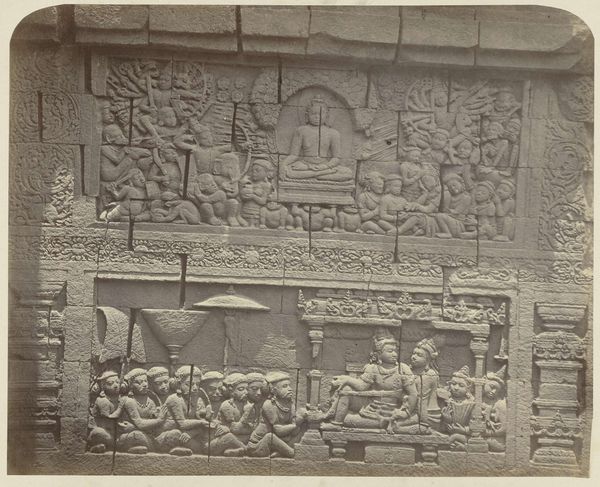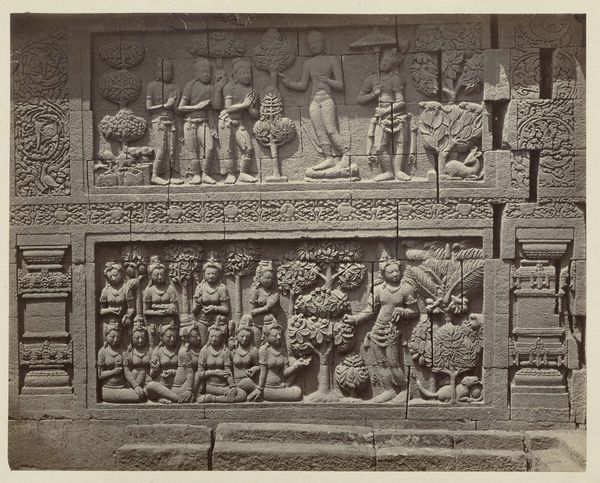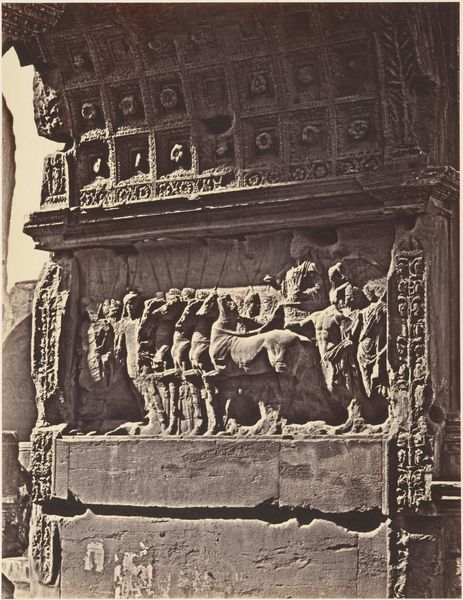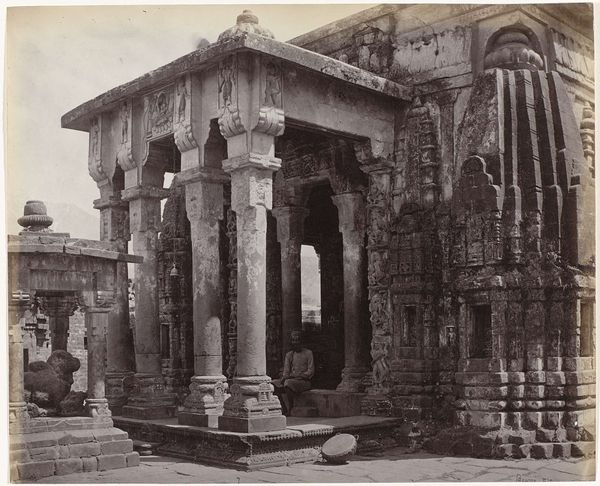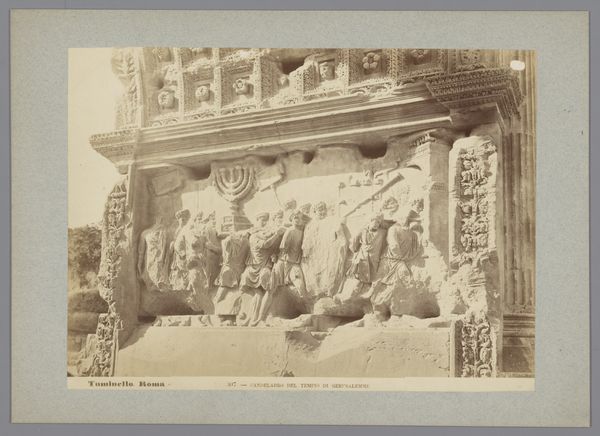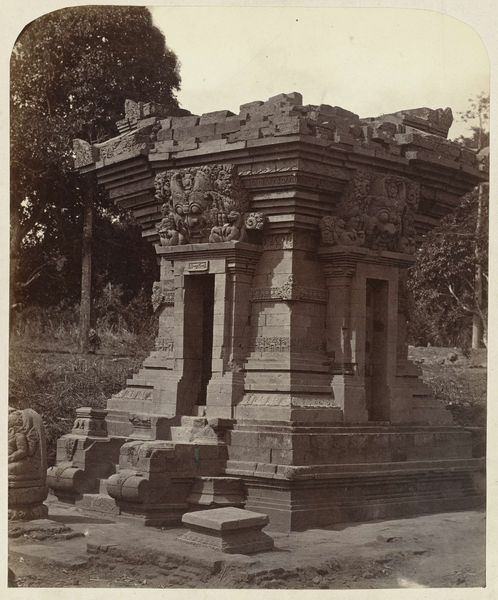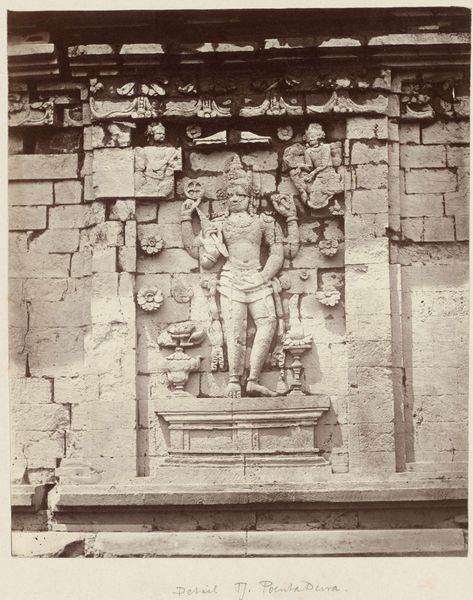
print, relief, photography, sculpture
# print
#
sculpture
#
relief
#
landscape
#
photography
#
romanesque
#
ancient-mediterranean
#
sculpture
Dimensions: height 452 mm, width 375 mm, height 718 mm, width 551 mm
Copyright: Rijks Museum: Open Domain
The Bisson Frères captured this photographic image of the bas-relief on the Arch of Titus in Rome sometime between 1852 and 1863. This arch, erected around 81 AD, commemorates Emperor Titus's victory in the Jewish War. The relief depicts Roman soldiers parading spoils from the Temple in Jerusalem, most notably the seven-branched menorah. This image, laden with cultural and historical significance, speaks volumes about Roman imperial power and the subjugation of conquered peoples. It served as a powerful symbol of Roman dominance, reinforcing the empire's military prowess and its ability to bring foreign treasures back to Rome. Consider the cultural context: Rome, at the height of its power, used art and architecture to broadcast its authority. This image, as a historical record, reminds us that art is never neutral. It is deeply embedded in the politics and power dynamics of its time. By examining such images, historians can uncover the complex layers of meaning embedded within them, using research resources that might include ancient texts, archaeological findings, and studies of Roman imperial ideology.
Comments
No comments
Be the first to comment and join the conversation on the ultimate creative platform.
